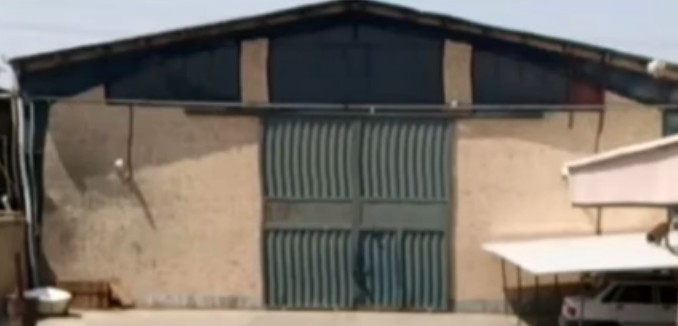Documents in the Iranian nuclear archive captured by Israel last year show that Iran built an underground facility, which was likely used for the development of nuclear warheads, a paper published Friday by the Institute for Science and International Security charged.
The paper — written by David Albright, a former weapons inspector and president of the institute; Olli Heinonen, former deputy director general of the International Atomic Energy Agency (IAEA); Frank Pabian, a former inspector for the IAEA; and Andrea Stricker, a senior policy analyst at the institute — reports the Iranian documents show that under the Amad Plan there was a project for designing the warhead for a nuclear weapon.
The Amad Plan is Iran’s nuclear weapons research program. After 2003, it was restructured and parts of it were made covert. One project associated with Amad was called Project 110. Under Project 110 was the Shahid Boroujerdi project.
The documents in the archive show that Iran built an underground tunnel at the Parchin military site to accommodate the secret research of the Shahid Boroujerdi project.
“The purpose of Project Shahid Boroujerdi was most likely the production and fabrication of uranium metal components for nuclear warheads,” the paper asserted. “Although uranium is not directly mentioned in any of the documents available to the Institute, the most logical choice of materials to be handled in this facility is uranium.”
That the metal used in the secret facility was likely uranium could be supported from a declaration of Iran to the IAEA, that an “Iranian project 3.14 was involved in shaping uranium metal.” This matched the project number for the Shahid Boroujerdi project in the nuclear archive captured by Israel.
One document in the archive described the rooms in the underground facility and their roles. The paper noted that the most sensitive rooms were fully underground (described as “buried” in the documents). These include rooms for ” metal reduction, melting and casting, and metal forming,” according to the paper.
“Overall,” the paper assessed, “this site’s location and layout would connotate a production-scale facility rather than a research and development facility.” The files Israel recovered from Iran didn’t document all of the equipment in the facility or the expected annual production of weapons-grade uranium the facility could produce. However, the paper estimated — “with a high degree of uncertainty” — that the facility could produce enough enriched uranium for 2.5 to 3.3 nuclear weapons annually.
According to the paper, the site has never been inspected, nor has Iran been known to have discussed it with the IAEA.
Iran, in fact, has denied ever undertaken “uranium metallurgy relevant to making nuclear weapons.” The IAEA, in its final assessment of Iran’s nuclear program in December 2015, stated, “Iran informed the [IAEA] that it had not conducted metallurgical work specifically designed for nuclear devices, and was not willing to discuss any similar activities that did not have such an application.”
The paper asserts:
The information about a heretofore unknown Project 110 facility highlights the immense value of the Nuclear Archive seized by Israel in filling in missing pieces of the jigsaw puzzle that is Iran’s nuclear weapons program. It also highlights the urgent need for the IAEA to inspect previously associated military sites in Iran, and once again, provides substantial evidence that Iran’s declarations to the IAEA are incomplete and deliberately false.
In reviewing the files recovered from Iran’s nuclear archive, the team has learned not only that Iran’s nuclear weapons program had progressed further than previously thought, but that Iran possessed “advanced capabilities” to develop nuclear weapons. What the experts concluded, was that “that Washington and the IAEA were constantly underestimating how close Tehran was to a bomb” prior to negotiating the deal that was finalized in 2015.
In a previous paper published by the institute, Albright, Heinonen, and Pabian argued that the new information contained in the archive “necessitates calling for more action by the IAEA and the Joint Commission, which administers the Joint Comprehensive Plan of Action (JCPOA).”
[Photo: i24NEWS / YouTube ]




